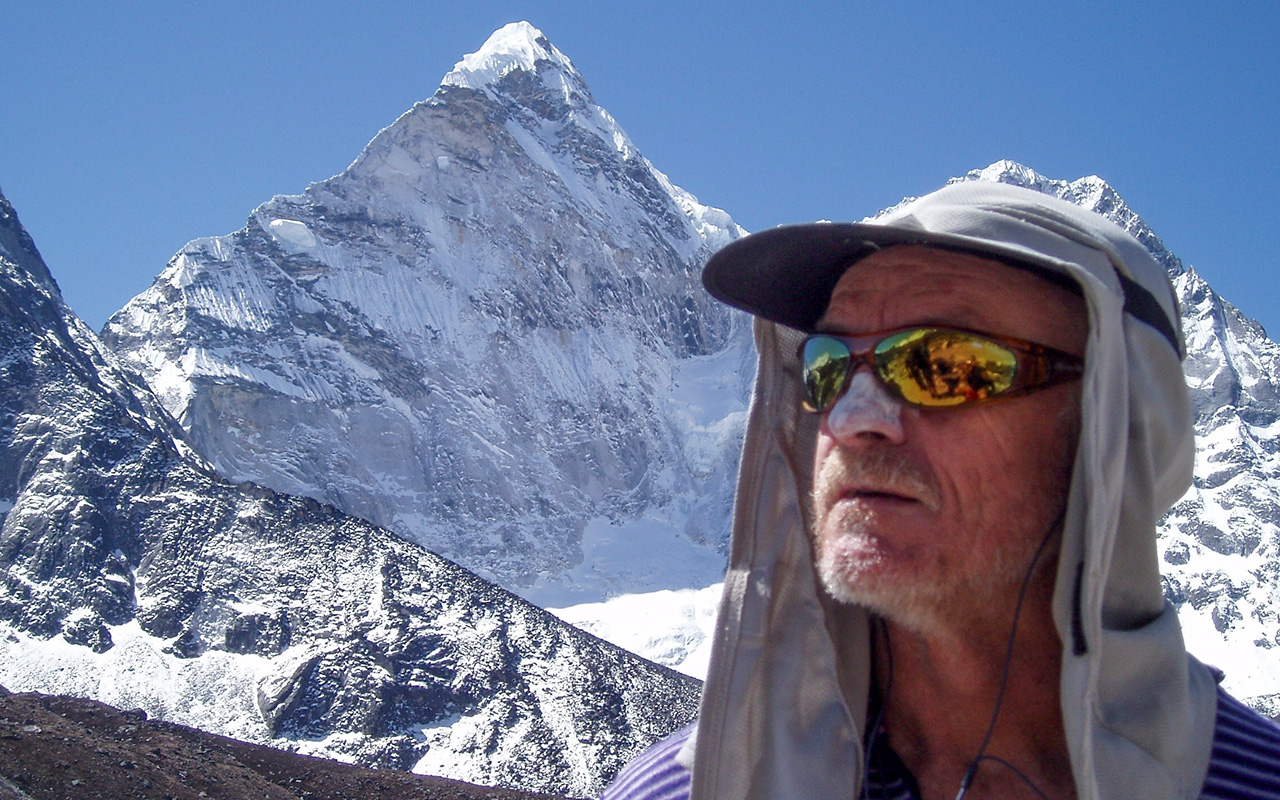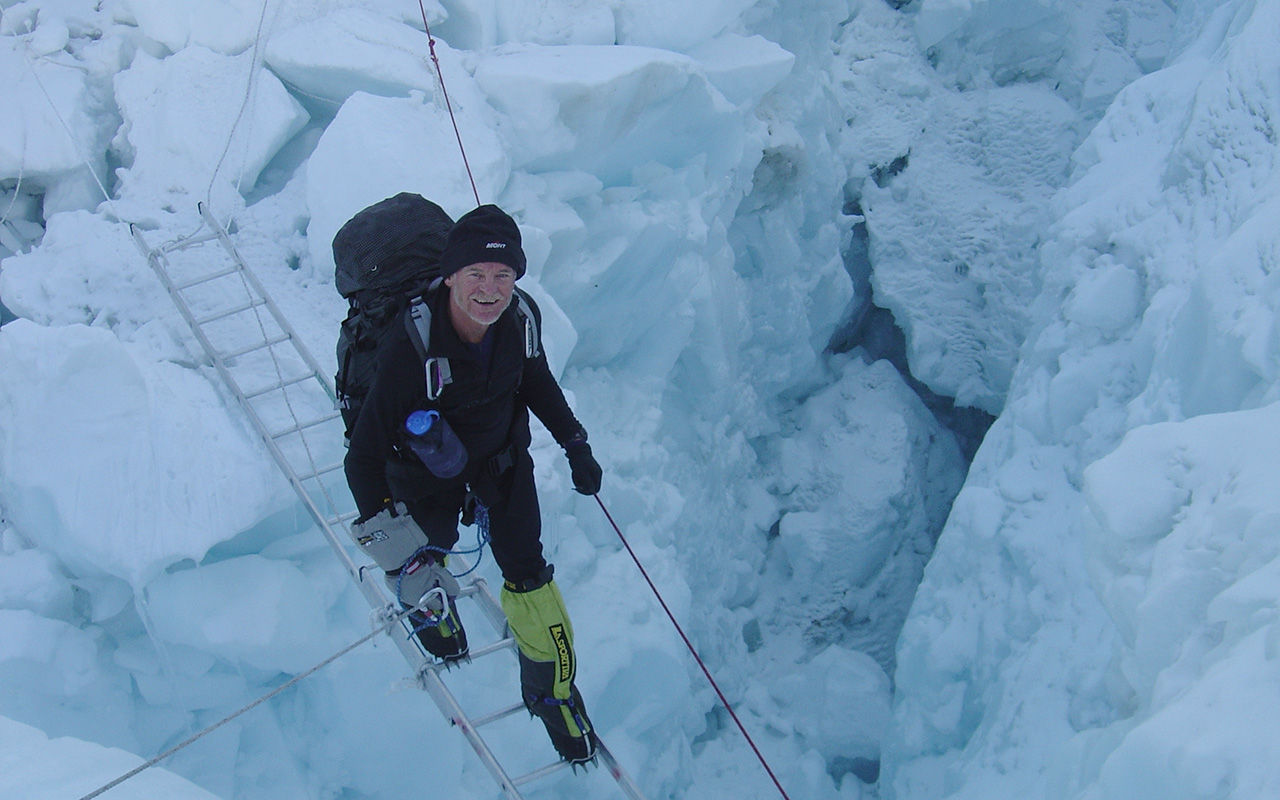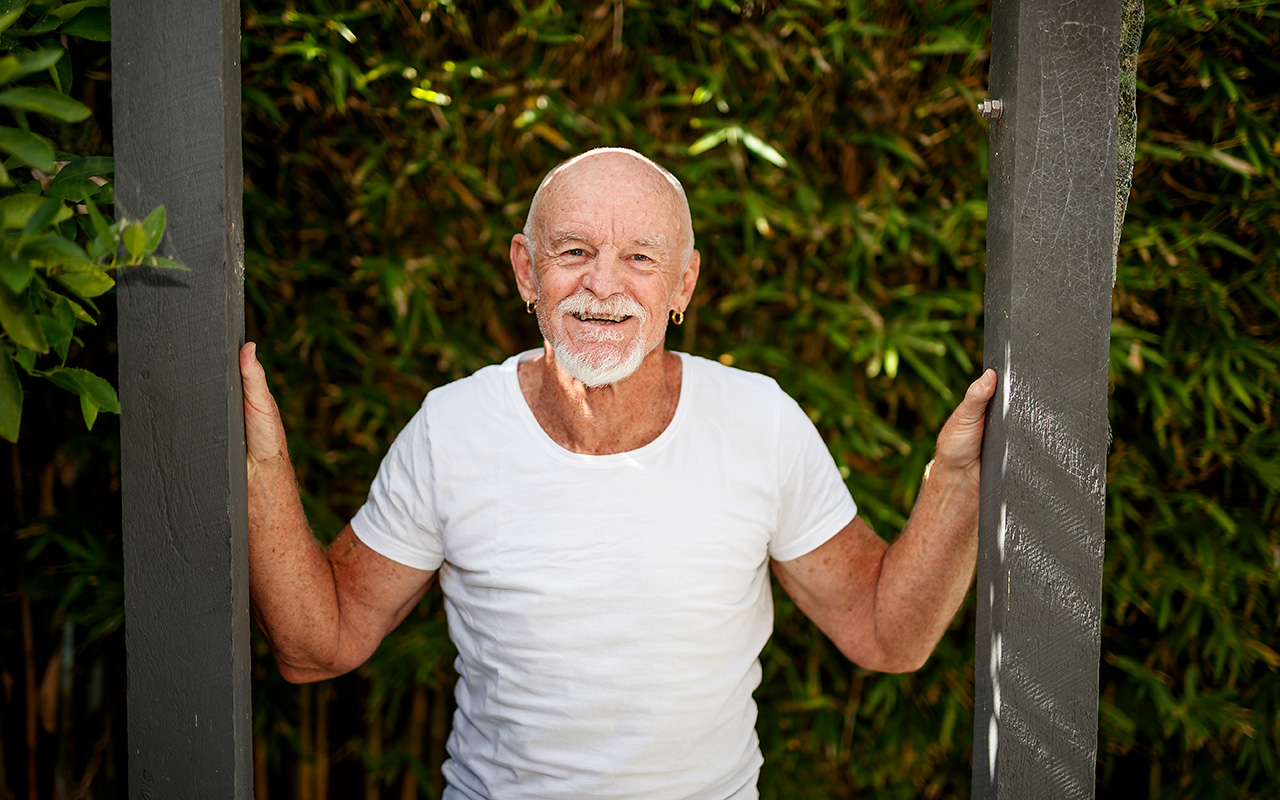
In the lead-up to climbing Mount Everest in 2005, John Taylor trained by climbing up and down Arthurs Seat. “We’d park the car at the bottom, and then I’d do ten up and bottoms under the chair lift.”
John is genuinely intrepid. He recently retired from the Bomb Response Unit of the Victoria Police Special Operations Group (SOG), where he developed his love of climbing. John ran climbing courses for the Victoria Police with students from the FBI, SAS, and from Germany, the GSG9, and has climbed six of the seven summits – the tallest mountains on each continent. John has also paddled Bass Strait in a kayak and enjoys the excitement of riding his Heritage model Harley Davidson.
Before Everest, John climbed Aconcagua in Argentina with his climbing partner and fellow member of the SOG, Greg Linsdell. John says “I really struggled. You have your good days and your bad days in climbing, and that’s a dirty mountain with heavy dust that blocked my sinuses. My confidence wasn’t great, considering we were going to do Everest in four months.” “We named ourselves the Victorian Police Everest Team. That didn’t go down too well with some of the senior members, but bad luck; once we had it in there, that’s the way it stayed,” he chuckles.
The team was formed after they lost their friend, Paul Carr, who was climbing Cho You mountain in Tibet/China, one of the eight mountains in the world that are over 8,000 feet. Paul was head of the SOG at that time (2003). Through the Sherpas and with the support of the Chief Commissioner at the time, Christine Nixon, they managed to bring his body down to a lower altitude. China allowed a Nepalese helicopter to fly in to bring his body back to Nepal, and John and Greg helped with the logistics of bringing him back.
John and the team were preparing for Everest but also running adventure camps and raising money for the Make A Wish Foundation. Life was busy. In 2005, they departed for Everest. John’s wife, Jann, and other family members walked to the base camp with them. John explained the difficulties of just getting that far.
“It’s all about acclimatisation and your body. Some people can do it, and some can’t. I had a good friend I worked with in the SOG who was very fit and couldn’t walk into base camp. Base Camp is 4,500 metres. Everest is 8,848 metres. If you flew straight to base camp from sea level, you’d die within a few minutes.” “So, the company we were climbing with tested us to make sure we’re suitable to go further. If we weren’t good enough, that was it.”
“It’s all about acclimatisation and your body. Some people can do it, and some can’t.
Climbing Everest isn’t just putting on your gear and going straight to the top. It’s complex, as John describes: “When we were acclimatised, we entered the ice falls, and that’s where most people die on Everest because it’s always moving. We made it to the Western Cwm and came back down for two days’ rest. Next time to Camp 1, then back again. Back to Camp 1 with some equipment, then stay a night, walk to Camp 2 the next day, then walk back down to base camp again and stay for four or five days. Then back to camp 2 for a couple of days then try and make it to camp 3, then back to base camp again. Going up and down, up and down, If you had a ladder, it probably would be eleven kilometres long.”

Finally, John reached the summit with his climbing partners Greg Linsdell and Nick Farr close behind. They started for the summit at 9.30 in the evening and arrived at 9.40 the next morning. “It was exhilarating,” says John, “You get to the top and you’re relieved. You have a good look – I always wanted to see the curvature of the earth – but I was still mindful ‘I’ve still got to get down.’ Most people die on the way down. We all met up at camp 4 later that afternoon. You’re not safe till you’re back in base camp.
They celebrated with a cake, but UK climber Kenton Cool, who summited before them, surprised them half an hour out of camp with an Eski and beers. John said, “We sat down in the ice falls by ourselves, had a few beers and enjoyed the moment.”
John followed Everest with Mount Elbrus in Russia, not a particularly high mountain, but it had its peculiar challenges at the time (2006), with corruption and bribes to be negotiated, making it stressful. Flashing his Victoria Police badge came in handy.
Then came Mount Kilimanjaro, where John says he didn’t have a good day. “It’s not your mind, it’s your body. We all got sick with diarrhoea and vomiting.”
John climbed Mount Denali in Alaska in 2008, which he describes as his favourite. “It’s the best mountain I’ve ever been on, white and pure – fantastic!” John did Denali with his son, Damian, who turned 18, on the mountain. To train for pulling the sleds, they pulled them on the sands of Frankston Beach loaded with sandbags.
Kosciusko is the sixth, with only Vision Massif in Antarctica to go. “It’s all financial at this stage,” says John. “I’m not one of those chasing a name or a title If I was going to spend that kind of money (tens of thousands of dollars), I’d go back to the Himalayas. It’s beautiful.”
Everest was the closest John came to disaster. “I was always on a safety line, but coming off the Hillary step, my crampons got caught on some old rope, my feet became higher than my body, and I made a fast descent. I landed half in Tibet and half in Nepal.”

John lives in Mornington with Jann and his Cairn Terrier Fraser and says he loves it. He is currently writing a book about his time in the Bomb Response Unit of the Victoria Police Special Operations Group, due to be published in 2025
